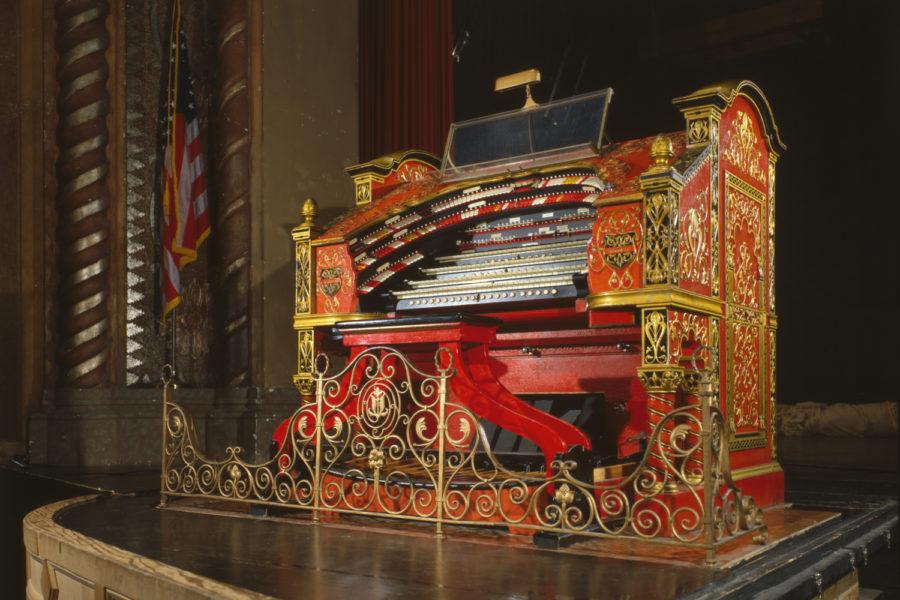Opinion | Hipster help wanted: Reviving old art forms
A Wurlitzer theater organ.
November 29, 2018
When my grandmother first invited me to watch a musician play along to silent movies, I groaned — it sounded like something only people over 80 would like.
But I couldn’t have been more wrong. Professional theater organist Nathan Avakian, along with the Pittsburgh Area Theater Organ Society, did indeed play along to silent movies — not those old, worn-out slapstick movies from nearly a century ago, but modern-day short and silent films, created by students and young people all over the world. He put a modern spin on a seemingly ancient instrument.
I fear that most of my generation shuns things that are not the latest fad — as was my first instinct when my grandma mentioned silent movies. Things young people see as old seemingly don’t interest them, but millennials should open their minds to art forms that precede them.
The hipster generation gives me hope. The very definition of a hipster is someone who follows trends outside the mainstream — that is, until the hipster population popularizes those trends and makes them mainstream, the never-ending cycle of true hipster culture.
“Countercultures attract some of the most creative and innovative thinkers,” Nathan Pipenberg, a journalist at HuffPost, said. “They mobilize the youth and accept novel ideas … long before most Americans are willing to.”
While the term hipster often has a negative connotation, hipsters are the ones who respect trends from generations before them — they’re the ones who preserve the past and even bring forgotten wonders back to the mainstream.
The hipsters of this generation have been responsible for the rebirth of old trends such as vinyl, ’90s fashion and even old-fashioned language. Vinyl record use is perhaps one of the biggest trends associated with hipsters. In the past year alone, sales of vinyl records have gone up 19.2 percent. If we can once again popularize these seemingly ancient arts, surely we can introduce students to other valuable vintage techniques.
Take the theater organ I saw Avakian playing along to silent movies. A magnificent display of keys, the organ boasts more than triple the number that grand pianos have. Covered in colorful paint and elaborate designs — as well as trinkets and miscellaneous keys for sound effects — each is a work of art.
If I’d never heard the instrument, I would have forever dismissed it simply because it seemed too old. But more young people — both hipster and otherwise — should learn to expand their horizons and appreciate the obscure arts like these.
The theater organ is no longer a new or innovative instrument, but it’s still just as impressive, and it deserves far more attention than it gets from this generation, as I discovered a few weeks back when I attended Avakian’s concert.
The PATOS concerts are far more than simply someone playing along to silent films — they’re spectacular shows of a dying, but extraordinary, art.
Using some beats he previously recorded, Avakian played the soundtrack to “Slumdog Millionaire.” Suddenly, the old-timey sounds one thinks of when ones thinks of the theater organ vanished into a heavy pop beat that vibrated the audience to its core.
When I thought it couldn’t get any cooler, Avakian finished his show with a phenomenal mashup of Queen’s most famous songs. Hearing anything by Queen performed live is a pretty wild experience, but to watch Avakian play half of “Bohemian Rhapsody” with only his feet was truly astonishing.
Putting a modern spin on old art forms, like Avakian did, is the perfect way to lure young fans — an audience PATOS desperately wants to attract.
When I spoke with PATOS President Dale Abrahams after the show, he was immensely excited that someone my age showed interest in promoting the theater organ. He said while the number of young people attending shows is growing, right now the audience stands at only 30 percent high school and college-age students.
As an artsy school, Pitt has the perfect student body to appreciate these art forms. Theater, film, art majors and hipsters alike are sure to enjoy old-timey music, especially if it has the modern spin to appeal to millenials.
Theater may not have the glamour or deafening beats of a Beyonce concert, but the performances still possess an entertaining vintage flair — and other art forms are the same.
Classical music today, for example, sounds nearly nothing like it did when the masters Bach or Beethoven played. Contemporary artists like Daniel Corral use homemade synthesizers and music boxes to produce sounds Claude Debussy would have never dreamed of. And visual artists like Kehinde Wiley, who painted portraits of Barack and Michelle Obama for the National Portrait Gallery, use ancient techniques to produce art unlike anything seen before it.
We as young people cannot let such a magnificent art die. We need to embrace our hipster titles proudly, latch onto what we find compelling and make sure old traditions live into the future, while still changing and evolving with whatever that future brings.



